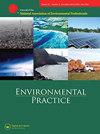An Unexpected Consequence of Plastic Litter Clean-Up on Beaches: Too Much Sand Might Be Removed
Q3 Social Sciences
引用次数: 15
Abstract
We removed plastic meso- and macro-litter (PML) during a beach clean-up practice on a protected Mediterranean sandy beach in central Italy from the high tide line to a berm half-way up the beach and from the berm to a sand dune the rest of the way up the beach. Plastic fragments, cotton buds, and expanded polystyrene (EPS) fragments were the most common categories constituting about 90% of total abundance. We separated sand from PML and found that the weight of the sand was about 14% of the total weight removed. Although our data may be affected by local factors, they have general implications for management actions. Environmental practitioners who develop projects in beach cleaning should pay attention when removing PML since a significant amount of sand could be unintentionally removed resulting in unnecessary material in landfills or other disposal, and over time potentially could significantly affect sandy beaches.清理海滩塑料垃圾的一个意想不到的后果:可能会清理掉太多的沙子
在意大利中部一个受保护的地中海沙滩上,我们在海滩清理实践中清除了塑料中、宏观垃圾(PML),从涨潮线到海滩半山腰的护堤,再从护堤到沙丘的其余部分。塑料碎片、棉花芽和膨胀聚苯乙烯(EPS)碎片是最常见的类别,约占总丰度的90%。我们将砂从PML中分离出来,发现砂的重量约为去除总重量的14%。虽然我们的数据可能受到当地因素的影响,但它们对管理行动具有一般意义。进行泳滩清洁工程的环保从业员在清除沙粒时应多加注意,因为大量的沙粒可能在无意中被清除,导致不必要的物料进入堆填区或以其他方式弃置,久而久之可能会严重影响沙滩。
本文章由计算机程序翻译,如有差异,请以英文原文为准。
求助全文
约1分钟内获得全文
求助全文
来源期刊

Environmental Practice
ENVIRONMENTAL SCIENCES-
CiteScore
0.90
自引率
0.00%
发文量
0
期刊介绍:
Environmental Practice provides a multidisciplinary forum for authoritative discussion and analysis of issues of wide interest to the international community of environmental professionals, with the intent of developing innovative solutions to environmental problems for public policy implementation, professional practice, or both. Peer-reviewed original research papers, environmental reviews, and commentaries, along with news articles, book reviews, and points of view, link findings in science and technology with issues of public policy, health, environmental quality, law, political economy, management, and the appropriate standards for expertise. Published for the National Association of Environmental Professionals
 求助内容:
求助内容: 应助结果提醒方式:
应助结果提醒方式:


